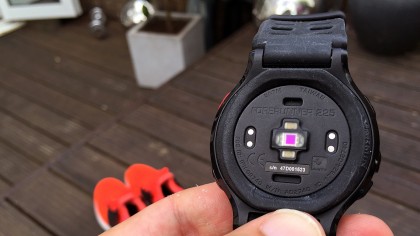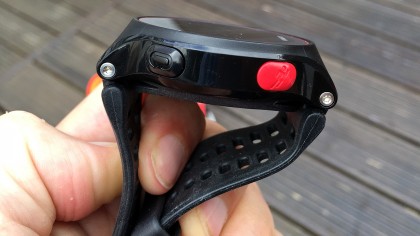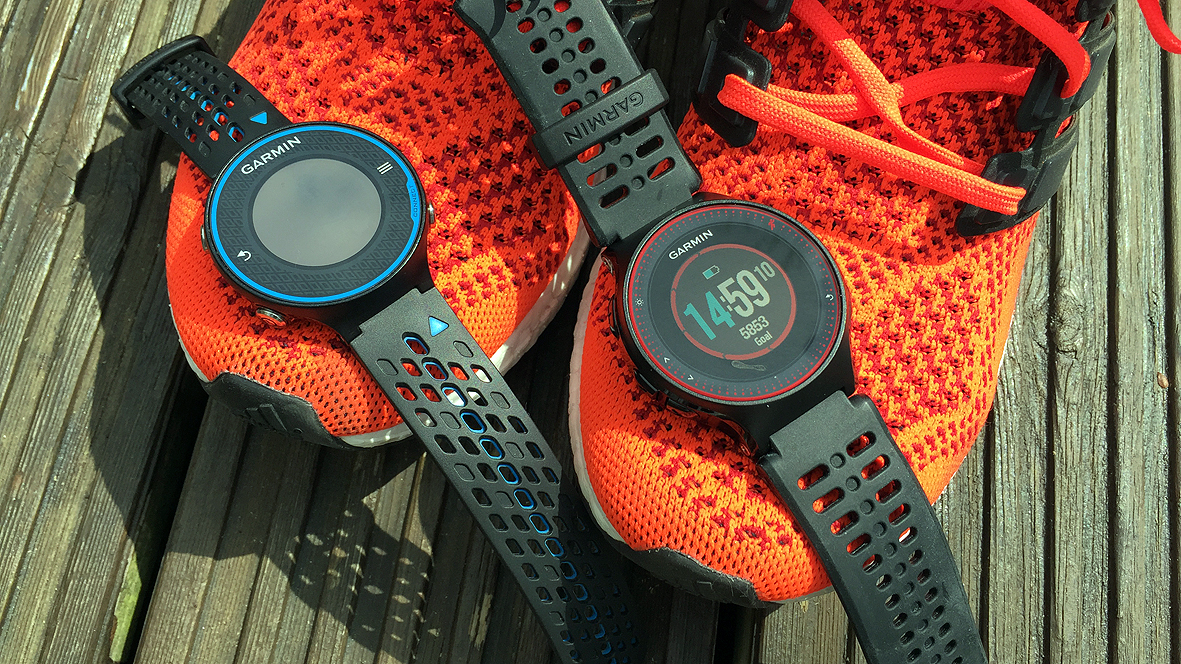TechRadar Verdict
Garmin's first heart rate tracking watch may not satisfy die-hard athletes but its range of features and engaging interface is brilliant for recreational runners.
Pros
- +
Easy to use Heart rate tracking from your wrist Infinitely customisable intervals
Cons
- -
Lack of running dynamics No micro-UBS charging
Why you can trust TechRadar
Go back ten years and buying a GPS running watch usually meant handing over some cash to Garmin, Polar or maybe Timex. For a long time these guys kept a niche audience of stat-obsessed runners to themselves. But fast-forward to 2015 and that's all changed.
From the TomTom Cardio Runner and Mio Fuse to the Adidas SmartRun, Suunto Ambit and Fitbit Surge (not to mention Endomondo, Strava and Nike+ Running), there are dozens of brands and smartphone powered run-tracking apps queuing up to be your running partner.
What the average runner demands from a running watch has also changed. Instead of simply telling us how far and fast we've run, we want real time stats that help us improve our running efficiency. We want devices that guide us through interactive interval sessions and we want to make sure we're getting the most out of every training session. That means accurate heart rate training.
Enter the Garmin Forerunner 225, the first Garmin running watch to offer heart rate tracking from the wrist. Garmin is late to this particular party and it's a big departure for a company that has always advocated the accuracy of ECG chest straps. But now that it's here, is the Forerunner 225 just Garmin playing catch-up or is this the best running watch we've seen to date?
Design and Build
The Garmin Vivoactive aside, Garmin has always made watches that look like sports watches. The Forerunner 225 is no different.
There's a very strong family resemblance to the Forerunner 620 and the 220. In fact the 225 looks like one of these older siblings with an optical heart rate sensor inside. Garmin has stuck to a trusty palette of muted colours (in this instance black) with subtle colour flashes (this time red, not blue), so that it sits as happily with a work suit as it does with a tracksuit.

A lot of other successful design DNA from previous Garmin watches is there too. You get the same soft silicon strap which makes it comfortable to wear for long periods, the round watch face and side button controls. On the downside Garmin hasn't dropped the infuriating habit of creating a unique charging cradle that's only compatible with this model of watch. Lose it and you're stuffed.
Sign up for breaking news, reviews, opinion, top tech deals, and more.
That gripe aside, the whole thing feels solid and built to withstand a bit of rough treatment. The pins that hold the straps in place, for example, are actually more like mini screws.
Overall the Forerunner is a chunkier beast than its predecessors. The watch face is larger and thicker while the strap is wider and slightly heavier, though not enough to bother most people.

At 54g the Forerunner 225 compares favourably with the likes of the Polar V800, which comes in at 81g without built-in OHR. Side by side it's actually more compact than other Optical Heart Rate (OHR) sensor watches like the TomTom Cardio Runner and the Adidas SmartRun.
The colour LCD display is sharp and easy to read on the move, even though the 225 has lost the touchscreen skills we like on the 620. The screen really comes into its own when you fire up the colour-coded heart rate zone training, and the bright colours make it easy to see when you're hitting the right beat.
When you flip the Forerunner 225 over you see the biggest difference. The OHR sensor sits discreetly in the middle of a raised silicon ring that prevents light leaking in and affecting the accuracy of heart rate tracking. This can be a bit of a bother as it does leave a temporary ring-shaped mark on your wrist.

Garmin tells us to expect seven to ten hours of battery life when GPS and OHR tracking is on. During tests, I twice hit nine hours plus. That should be long enough to cover you for everything up to and just beyond a marathon, though ultra runners might want to look for an alternative.
On the Run
Over the past 18 months, Garmin has definitely made its watches easier to use. The information is displayed more clearly, screens are easier to customise and navigating the myriad functions has become far easier for the less initiated.
The Forerunner 225 continues this trend. Garmin wants it to be an easy-to-use tool to mentor you towards a new personal best. The amateur's best running buddy, let's say, and it mostly achieves that.
If you're new to Garmin, it will take time to become familiar with the watch's interface but no more than any other brand. One plus is that you can do this without reaching for the manual. The five side button controls all have obvious jobs, making it straight-forward to navigate the different menus and easy to scroll through your vital stat screens mid-run.

While it lacks the running dynamics of the 620 and the VO2 Max or the insights you'll find on the Polar V800, the 225 has a strong set of running features with plenty to help any budding amateur improve.
In addition to the usual pace, distance, speed, time, calories and heart rate stats that you can see in real time, you get cadence stats post run.
There's also a powerful intervals tool that lets you follow sessions created on the partner web tools, Garmin Connect, combining metrics like pace, time, distance, heart rate and intensity. There are some niggles with this, however.
The 225 can be set to beep and vibrate when you've completed an interval. This works fine when testing it for time-based segments but for GPS-based distance intervals, the alerts are less clear, often going off before reaching the distance you mark out with your first interval.

Another win is the speed with which the watch locates GPS. While you may have to wait longer on some occasions, you should always have a lock within 45 seconds. It also brings sleep and activity tracking into the mix, making this a much more capable all-rounder.
Your current step total is displayed on the home screen along with a range of other handy stats including the distance you've covered, calories you've burned that day and current heart rate.
The 225 automatically adjusts your daily steps goal based on your recent activity, a welcome motivational tool that not all activity trackers bother with. You can also set the watch to give you a gentle vibrating reminder, a move-your-ass alert, if you've been stationery for too long.

The on-board accelerometer that makes the activity tracking possible also lets you track your indoor runs, should you need to take to the treadmill.
